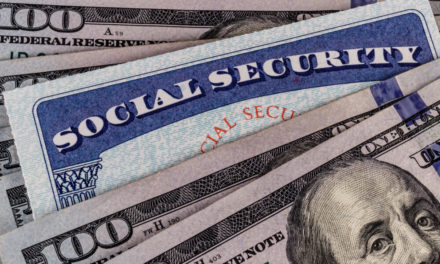Around the office, people know me as the “income guy.” A large share of my investment research is geared toward generating money you can use now.
Capital gains (aka rising stock prices) are ultimately outside of your control.
Stocks tend to rise over time, or at least they have up until now.
But you can’t make stock prices go up. Mr. Market doesn’t know you and doesn’t care what return you need to meet your retirement goals.
So any retirement plan that requires higher stock prices is inherently risky. A strategy with a large income component will be a safer bet.
Let’s throw down a few rules here.
Dividend Growth vs. Yield in an Income Portfolio
High dividend yields are fantastic. But they’re not the end all, be all.
Dividend growth is also important because it keeps you a step ahead of inflation. I used McDonald’s as an example of this in a recent article. If the stocks in your dividend portfolio hike their payouts at a faster pace than the rate of inflation, you get a little richer with each passing year.
Most of the time, a growing dividend is also the sign of a healthy company. Management teams tend to be conservative. They prefer to hoard cash … just in case they hit a bump in the road later. So, raising the dividend is a big deal. It’s a sign that management is comfortable parting with that extra dollar because they see a lot more coming in to replace it.
On the other hand, you should be careful with high-yielding stocks that haven’t seen meaningful dividend growth in years. A stagnant dividend is often the sign of a stagnant company with tepid growth.
You may be enjoying a nice dividend yield today. But will you feel the same way five years from now if both the share price and the quarterly dividend haven’t budged? Or worse, if the company ends up slashing its dividend due to deteriorating fundamentals?
Again, I’m comfortable having a few monster yielders in my income portfolio. It’s fine to reach for yield in moderation.
But a good income portfolio should have a large allocation to lower-yielding dividend growers. These are the safer stocks that will get you through retirement.
The Benefits of Bonds
I’ll be straight with you: You won’t get meaningful income from bonds. Across the yield curve, Treasurys yield less than the rate of inflation. And high-quality corporate bonds don’t yield much better.
That said, bonds are still worth owning because they lower overall portfolio volatility. If you’re retired (or close to retirement), you should have something in the ballpark of 30% to 40% of your portfolio in bonds. You may want a good deal more if you’re well into your 80s or 90s.
Bonds also give you the dry powder you need to buy dips. We got a reminder of this back in March.
If you were fully invested going into the COVID-19 meltdown, you didn’t have the cash on hand to buy the dip. But owning bonds in your portfolio gives you something to sell so you can buy depressed stock.
I don’t know when the next bear market will strike. It could be tomorrow, or it could be 10 years from now. But I like keeping my portfolio balanced enough to pounce on those opportunities as they come up.
Money & Markets contributor Charles Sizemore specializes in income and retirement topics. Charles is a regular on The Bull & The Bear podcast. He is also a frequent guest on CNBC, Bloomberg and Fox Business.
Follow Charles on Twitter @CharlesSizemore.





